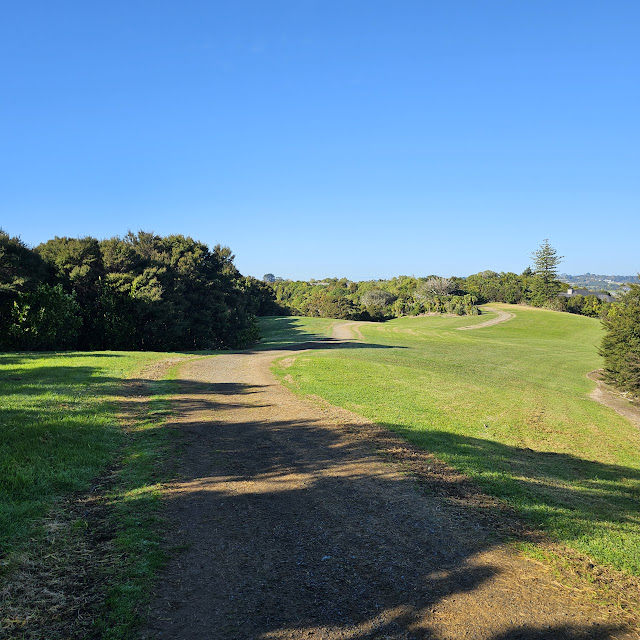New Zealand is crammed full of beautiful places but despite having lived here all my life I find there are always more to discover. I had long planned to walk along the Te Waihou River to visit the Blue Springs but never quite got around to it. As luck would have it it was a planned hike with the Auckland Global Trekkers hiking group, which I have joined recently, and was an opportunity I couldn't let pass by.

 |
| At the start of the walk from White's Rd end. |
This sublime riverside walk is located in the rolling green farmlands of the South Waikato between the towns of Tirau and Putaruru and about a two hour drive from Auckland. You can enter the walk from either end, the Leslie Rd entrance is a shorter walk, taking about 15 minutes to reach the spring. It is suitable for wheel chairs and baby buggies. Our group of 42 was keen to follow the length of the trail so entered from Whites Rd to walk the 9.4 kilometres return. It is not particularly challenging although there were a few muddy patches, which will have dried up by summer, and a couple of steep staircases to negotiate, but all in all not arduous. Recent work on the track has provided boardwalks and new steps with handrails.
From the entrance you pass grazing cows which fix you with a quizzical gaze as you pass. The path then leads through wetlands along the river banks. The view of emerald green water plants under the crystal clear flowing water, backed by limestone cliffs, is stunning. The water, fed by the Blue Spring, flows at the rate of 9240 gallons a minute and maintains a constant temperature of 11 degrees all year round. From it's source on the Mamaku Plateau it takes 100 years to filter through limestone before producing water said to be amongst the purest in the world and which is used for around 70% of the bottled water sold in New Zealand.
| Spectacular - plants under crystalline water and backed by basalt cliffs |
 |
| The Blue Spring - 100 year old water bubbling up from below the earth |
 |
| The Waikato River |
I loved this hike. It was a fantastic day out with a great group of people in a stunningly beautiful location. To walk it you require only a moderate level of fitness and there is the option of taking the shorter route for the less fit.
 |
| On the Te Waihou walkway |
Note: If you need to use bathrooms use the ones at either end of the track. The one within the track was virtually unusable, a shame because the maintenance of the track was exceptional but sadly the toilet seemed to have been overlooked.









































